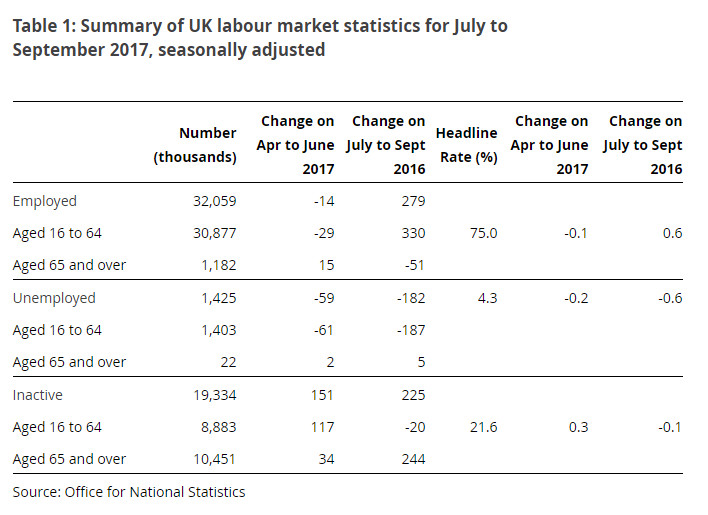The State of the Labour Market

Is the long and sustained recent labour market boom finally running out of steam?
Philip Hammond started his budget last week by saying the UK economy “continues to grow, continues to create more jobs than ever before, and continues to confound those who seek to talk it down”.
This is in stark contrast to Kevin Green, chief executive of the Recruitment and Employment Confederation who is worried that job growth is about to fall off a cliff. Speaking at an event recently, he stated that:
“Millions of people could be “condemned” to working for 60 years in the “gig economy”, with low wages and low job security…he said millions of skilled jobs were disappearing, making it harder for people to progress in their careers.”
Bournemouth Echo
So, who is right?

According to the latest Labour market figures published earlier this month, there are some worrying signs of employment falling, working-age inactivity rising, and increases in involuntary temporary and part-time employment.
The signs that Britain’s long employment boom has come to an end emerged recently as official figures showed a drop in the number of people in work, a fall in full-time employment and a decline in the number of job vacancies. (The Guardian)
Looking at the facts Phillip Hammond is correct, but probably a bit short-sighted. We have to look beyond the right now and into the future, forecasting what’s likely to happen with the mix of the economic landscape, political issues and all-round bigger picture to get an accurate view.
The CIPD have published their latest Labour Market Outlook for Autumn 2017. Providing a set of forward-looking labour market indicators highlighting employers’ recruitment, redundancy and pay intentions for the fourth quarter of 2017 onwards. The survey is based on responses from 2,007 employers.
We’ve summarised some of the key findings here for you below, so you can make up your own mind.
Key Points:
Labour Demand & Supply
- Demand for labour is expected to remain robust
- The strength in labour demand is greatest in the technology (+43) manufacturing (+38) and professional, scientific and technical sub-sectors,
- Employment confidence is highest in the East Midlands (+38) and the southwest of England (+51)
- It seems likely that the strong growth in employment over the past year will ease during the course of 2018.
- The continued strength in labour demand has not increased recruitment pressures for employers during the past six months
- Only 15% of all vacancies are skills shortage vacancies. Skills shortage vacancies are more prevalent in the public sector (18%) than in the private sector (13%)
- 29% of employers with current vacancies report it to be from skill shortages, suggesting pay pressure is unlikely to come from a lack of skills in the labour market.
- Employers received an average (median) 24 applicants for the last low-skilled vacancy they tried to fill, compared with 19 applicants for the last medium-skilled vacancy and six applicants for the last high-skilled vacancy according to recent research.
- The recent growth in labour demand has been matched by additional sources of labour supply over the past year, especially from EU nationals, older workers and welfare claimants.
Salaries
- Wage growth expectations remain subdued for the rest of the year and rising modestly during the course of 2018
- Productivity has fallen for the second consecutive quarter.
- Almost a third (31%) of LMO employers anticipate a basic pay increase of between 2% and 2.99%
Download the Full Labour Market Outlook report
Roll on 2018!
Related Dovetail articles:
Over a third of UK workforce unhappy
October’s Job Market Report
The War for Talent continues
Who wants to have their cake and eat it?
Sources:
ONS
CIPD
The Guardian
